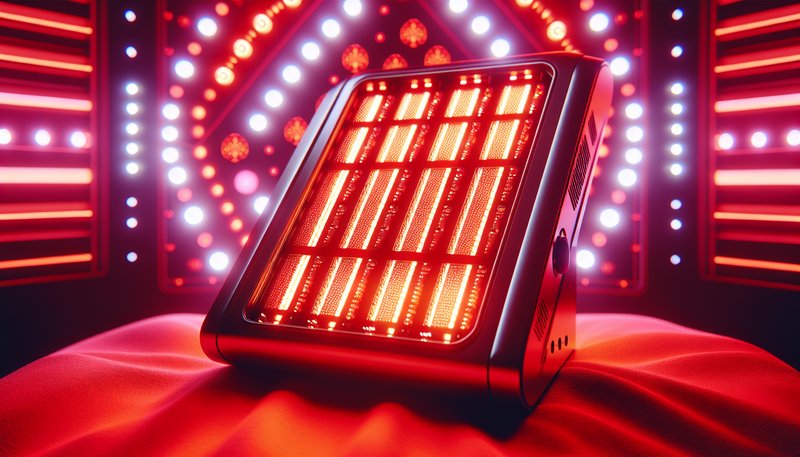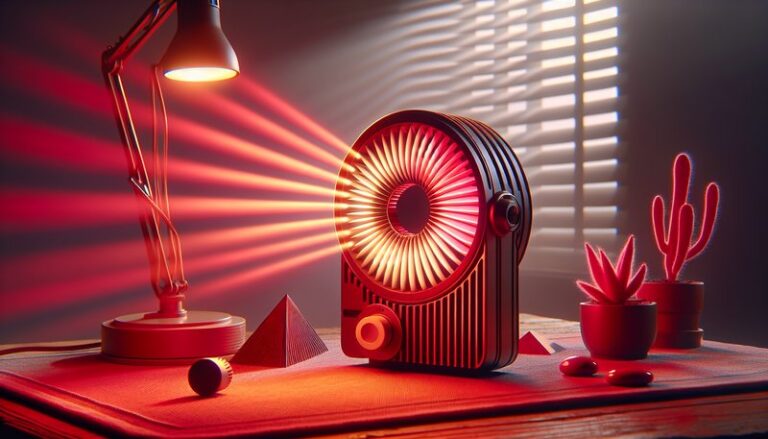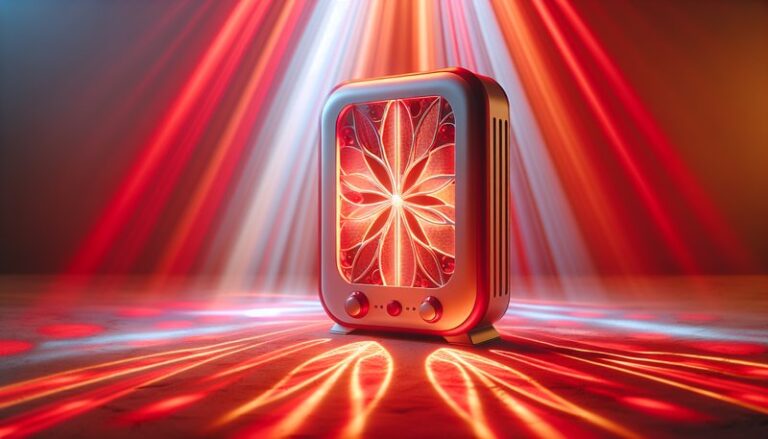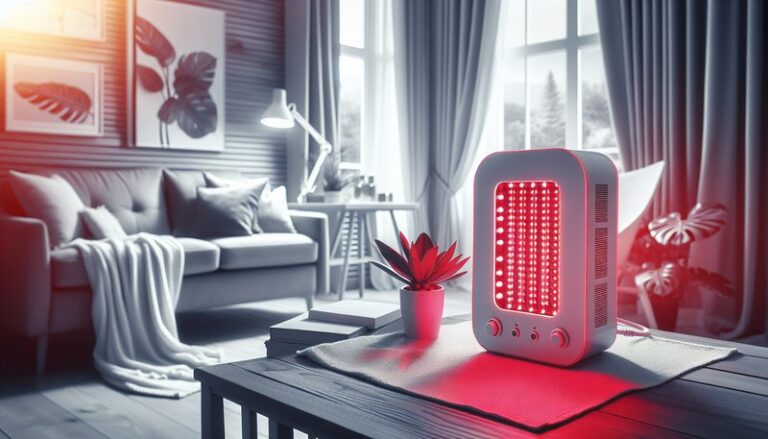What Is Red Light Therapy Good For?
Have you ever wondered if there’s a non-invasive method to improve skin health, boost recovery, and enhance overall wellness? Red light therapy (RLT) might just be the answer you’ve been looking for.
This article delves into what red light therapy is, the wide range of its benefits, considerations for use, alternatives, and frequently asked questions about this innovative treatment. By the end, you’ll have a well-rounded perspective on how RLT can fit into your health and wellness regimen.
Key Takeaways
- Red light therapy has been shown to help improve skin conditions, reduce inflammation, and accelerate wound healing.
- It’s a safe, non-invasive treatment option that utilizes specific wavelengths of light to promote healing and wellness.
- Important considerations include skin type, treatment duration, and potential side effects.
What is Red Light Therapy?
Red light therapy is a therapeutic technique that uses low-level wavelengths of red light (typically between 600 nm and 650 nm) to penetrate the skin, promoting healing and rejuvenation at a cellular level. The therapy is based on the principle that light energy can stimulate cellular processes, which helps improve tissue repair, reduce inflammation, and enhance circulation.
Although red light therapy has its origins in the medical field, it has gained popularity in the beauty and wellness industries for its myriad applications. Its non-invasive nature makes it appealing to those seeking alternative treatments for common health issues.
How Does It Work?
When red light penetrates the skin, it is absorbed by the mitochondria in the cells, leading to increased production of adenosine triphosphate (ATP). This boost in ATP enhances cell metabolism, promoting the body’s natural healing processes.
What are the Benefits of Red Light Therapy?
Red light therapy is backed by a growing body of research, with benefits that span various facets of health and beauty. The following points elaborate on these advantages.
Improves Skin Health
One of the primary applications of red light therapy is in skincare. Studies show that it can reduce fine lines, wrinkles, and signs of aging by stimulating collagen production. Many users have reported a noticeable improvement in skin texture and tone after regular treatments.
Reduces Inflammation
Red light therapy has anti-inflammatory effects, making it beneficial for conditions such as arthritis and muscle soreness. It works by increasing circulation and promoting the body’s natural responses to inflammation, leading to pain relief and quicker recovery times.
Enhances Wound Healing
Research indicates that RLT can accelerate wound healing by increasing blood flow and stimulating collagen synthesis. This is particularly helpful for individuals recovering from surgery or injuries, as it can shorten recovery time and improve healing outcomes.
Supports Hair Growth
Emerging studies suggest that red light therapy can stimulate hair follicles and promote hair growth in those experiencing androgenetic alopecia or other forms of hair loss. Many users report thicker and denser hair with regular use.
Boosts Mood and Energy
Partial research indicates that exposure to red light can improve mood and increase energy levels. Thus, incorporating RLT might also be seen as an alternative to combat fatigue and seasonal affective disorder (SAD).
Is it Possible to Perform Red Light Therapy at Home?
Yes, many people opt for at-home red light therapy devices, as they allow for convenient and cost-effective treatment. Various devices such as handheld wands, face masks, and full-body panels are available for personal use.
What are the Advantages of At-Home Therapy?
Using red light therapy at home provides multiple benefits, including:
Convenience
At-home devices allow you to integrate RLT into your daily routine without the need for appointments or travel to clinics, making it easier to stay consistent with treatments.
Cost-Effective
Investing in a device can be more affordable long-term than paying for multiple sessions at a clinic or spa, especially if you plan to use red light therapy regularly.
Safety and Comfort
Home treatments allow you to control your environment, which can enhance relaxation and comfort during sessions, with minimal interference from others.
What are the Disadvantages of At-Home Therapy?
While at-home therapy has its advantages, several challenges should be considered:
Device Quality and Efficacy
Not all devices are created equal; some may not deliver effective wavelengths or adequate power, making it crucial to research before purchasing.
Lack of Professional Supervision
Performing therapy at home means you may miss out on personalized treatment plans or adjustments that a professional can provide based on your specific needs.
Don’t miss Can Red Light Therapy Treat Melasma?
Consistency in Usage
Maintaining a regular schedule for at-home therapy can be challenging and might require a conscious effort to ensure optimal results.
What are the Things to Consider Before Trying Red Light Therapy?
Before embarking on red light therapy, there are important factors to weigh to ensure a positive experience.
Understand Your Skin Type
Different skin types react differently to light therapies. Understanding your skin’s needs and sensitivities can help you choose the right device or professional treatment.
Consult with a Healthcare Provider
Before starting any new treatment, especially if you have existing health conditions or concerns, consulting a healthcare professional is advisable to avoid potential complications.
Follow Device Instructions Carefully
If using an at-home red light therapy device, always adhere to the manufacturer’s guidelines regarding session duration, distance from the device, and frequency of use to prevent adverse effects.
Be Patient for Results
Red light therapy is not an instant fix; it often requires consistent use over several weeks to see noticeable improvements. Setting realistic expectations can enhance your experience.
What are the Alternatives to Red Light Therapy?
If red light therapy is not suitable for your needs or preferences, consider these alternatives:
Laser Treatment
Laser treatments can target specific skin issues and provide benefits similar to RLT, such as skin tightening and rejuvenation. However, they may also involve more downtime and discomfort.
Microdermabrasion
This non-invasive procedure exfoliates the skin, removing dead cells to promote a fresh appearance. It can help improve skin texture but may not provide the same deep cellular benefits as RLT.
Chemical Peels
Chemical peels use acids to exfoliate and improve various skin conditions, targeting issues like acne, pigmentation, and texture. They often result in rejuvenated skin but may require recovery time.
Topical Treatments
Creams and serums containing active ingredients such as retinoids or hyaluronic acid can also improve skin condition and overall health. These options are widely available but may take longer to show results compared to RLT.
Discover the story in Home Red Light Therapy?
Conclusion: Is it Recommended to Try Red Light Therapy?
In summary, red light therapy is a promising option for those seeking to enhance their skin’s appearance, reduce inflammation, and support healing. While there are many benefits, it’s essential to consider your specific needs, understand potential risks, and consult with a professional when necessary. For many, the convenience and efficacy of at-home devices also make RLT an attractive addition to their self-care routine.
Frequently Asked Questions
Is red light therapy safe?
Yes, red light therapy is generally considered safe when used appropriately. However, it is advisable to consult a healthcare provider, especially if you have pre-existing conditions.
How often should I use red light therapy?
Frequency can vary based on the condition being treated and the specific device being used. Typically, users may benefit from 2-5 sessions per week.
Are there any side effects?
Red light therapy is non-invasive and side effects are usually minimal. Some users may experience temporary redness or mild irritation after treatment.
How long does it take to see results?
While some people may notice improvements after a few sessions, most users can expect to see significant results after several weeks of regular treatment.
Can I use red light therapy on all parts of my body?
Red light therapy can typically be used on most areas of the body, but it’s essential to avoid sensitive areas, such as the eyes, unless using devices specifically designed for those areas.






